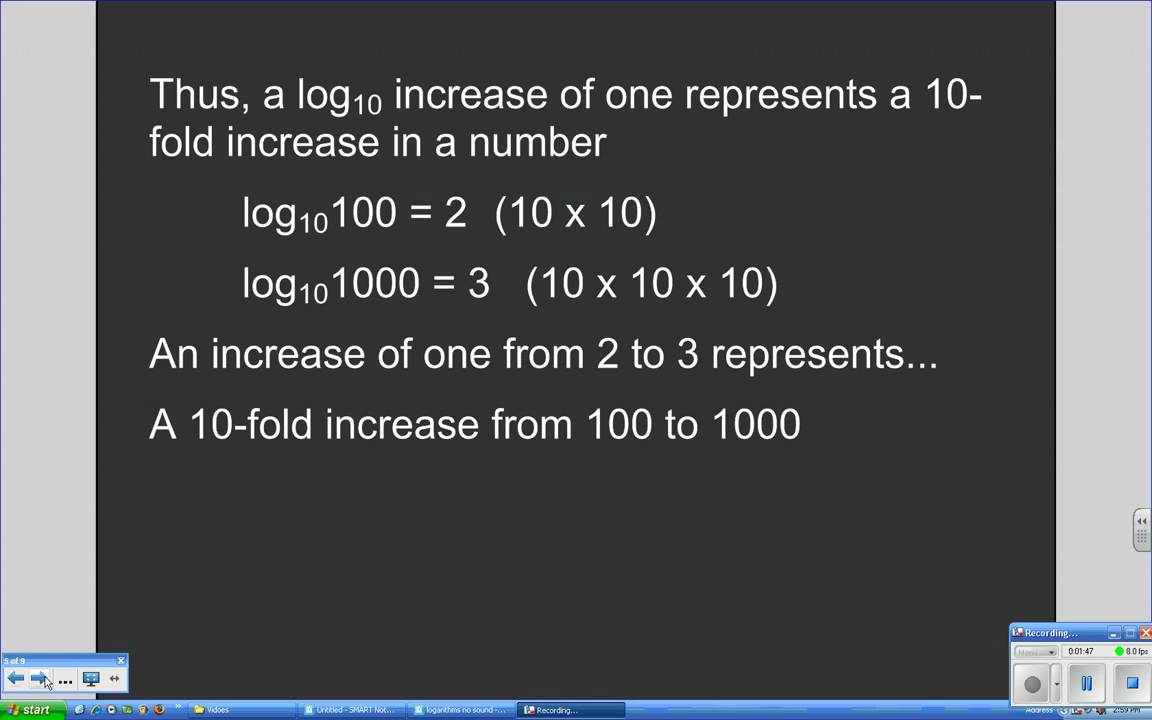REPRESENTING REAL LIFE SITUATION USING LOGARITHMIC FUNCTION || Applications of Logarithmic Function
Summary
TLDRThis tutorial explores real-life applications of logarithmic functions, specifically in seismology, acoustics, and pH levels. It explains how logarithms are used to calculate earthquake magnitudes on the Richter scale, sound intensity in decibels, and the pH levels of solutions. Using detailed examples, the video shows how to apply logarithmic functions to determine the magnitude of an earthquake, the intensity of sound, and the acidity of a solution, while highlighting their significance in understanding natural phenomena. The tutorial encourages viewers to engage with problems and share their solutions.
Takeaways
- 🌍 The Richter scale is used in seismology to measure earthquake magnitude using logarithmic functions.
- 📈 The magnitude of an earthquake is based on the logarithm of the ratio of energy released compared to a reference earthquake.
- 🧮 The formula for earthquake magnitude is: R = (2/3) * log(E / 10^4.40), where E is the energy released by the earthquake.
- 💥 In the example, an earthquake releasing 10^12 joules of energy has a magnitude of 5.1 on the Richter scale, indicating it is a strong earthquake.
- 🔍 The earthquake releases approximately 39,810,717 times more energy than the reference earthquake.
- 🔊 In acoustics, the decibel level of sound is calculated using the formula D = 10 * log(I / 10^-12), where I is the sound intensity.
- 📏 For a sound intensity of 10^-6 watts per meter squared, the sound level is 60 decibels, which is considered a normal sound level.
- 🔊 The sound in a quiet office (10^-6 watts per meter squared) is 1 million times more intense than the least audible sound.
- 🧪 The pH level of a solution is determined using the formula pH = -log([H+]), where [H+] is the concentration of hydrogen ions in moles per liter.
- ⚗️ A solution with a pH of 5 is considered acidic since it's below 7 on the pH scale, indicating a higher concentration of hydrogen ions.
Q & A
What is the significance of using a logarithmic function to measure earthquake magnitude?
-A logarithmic function is used to measure earthquake magnitude because it allows the representation of large variations in energy release in a more manageable scale. This makes it easier to quantify and compare the intensity of earthquakes.
How is earthquake magnitude calculated using the given formula?
-The earthquake magnitude (R) is calculated using the formula R = 2/3 log (E / 10^4.4), where E is the energy released by the earthquake in joules. This formula compares the energy of the earthquake to a reference earthquake, which releases 10^4.4 joules of energy.
In the example provided, how much energy does the earthquake release, and what is its magnitude?
-The earthquake releases approximately 10^12 joules of energy. Using the formula, its magnitude on the Richter scale is calculated as 5.1.
How much more energy does the earthquake release compared to the reference earthquake?
-The earthquake releases approximately 39,810,717 times more energy than the reference earthquake.
What is the decibel level formula used to calculate sound intensity?
-The decibel level (D) of sound is calculated using the formula D = 10 log (I / 10^-12), where I is the sound intensity in watts per meter squared, and 10^-12 watts per meter squared is the least audible sound a human can hear.
How is the sound intensity in decibels calculated for a quiet office with a sound intensity of 10^-6 watts per meter squared?
-For a sound intensity of 10^-6 watts per meter squared, the decibel level is calculated as 60 decibels using the formula D = 10 log (10^-6 / 10^-12).
How much more intense is the sound in the quiet office compared to the least audible sound?
-The sound in the quiet office is 1 million times more intense than the least audible sound a human can hear, as represented by 10^6.
What is the pH formula used to measure acidity in water-based solutions?
-The pH of a water-based solution is calculated using the formula pH = -log [H+], where [H+] is the concentration of hydrogen ions in moles per liter.
In the example given, what is the pH level of a solution with a hydrogen ion concentration of 10^-5 moles per liter?
-The pH level of the solution is calculated as 5, which indicates the solution is acidic since it is below the neutral pH of 7.
Why is it important to use logarithmic functions in measuring sound intensity, earthquake magnitude, and pH levels?
-Logarithmic functions allow for the compression of large ranges of values, making it easier to interpret, compare, and analyze phenomena that involve exponential changes, such as sound intensity, earthquake magnitude, and acidity.
Outlines

Dieser Bereich ist nur für Premium-Benutzer verfügbar. Bitte führen Sie ein Upgrade durch, um auf diesen Abschnitt zuzugreifen.
Upgrade durchführenMindmap

Dieser Bereich ist nur für Premium-Benutzer verfügbar. Bitte führen Sie ein Upgrade durch, um auf diesen Abschnitt zuzugreifen.
Upgrade durchführenKeywords

Dieser Bereich ist nur für Premium-Benutzer verfügbar. Bitte führen Sie ein Upgrade durch, um auf diesen Abschnitt zuzugreifen.
Upgrade durchführenHighlights

Dieser Bereich ist nur für Premium-Benutzer verfügbar. Bitte führen Sie ein Upgrade durch, um auf diesen Abschnitt zuzugreifen.
Upgrade durchführenTranscripts

Dieser Bereich ist nur für Premium-Benutzer verfügbar. Bitte führen Sie ein Upgrade durch, um auf diesen Abschnitt zuzugreifen.
Upgrade durchführenWeitere ähnliche Videos ansehen

(Part 2) Fungsi Logaritma Bab Fungsi dan Pemodelannya || Matematika Tingkat Lanjut Kelas XI

3ª SÉRIE - ENSINO MÉDIO - FASE 2 - DESAFIO CRESCER - MATEMÁTICA

Logarithms and the pH scale

BAB 5 : REAKSI-REAKSI KIMIA DAN DINAMIKANYA | Part 2: Asam dan Basa | IPA Kelas 9 Kurikulum Merdeka

Logarithms - Real Life Applications | Logs | Don't Memorise

ACIDS, BASES AND SALTS in 1 Shot FULL CHAPTER IN ANIMATION ||| NCERT SCIENCE Class 10th Chapter 2
5.0 / 5 (0 votes)
